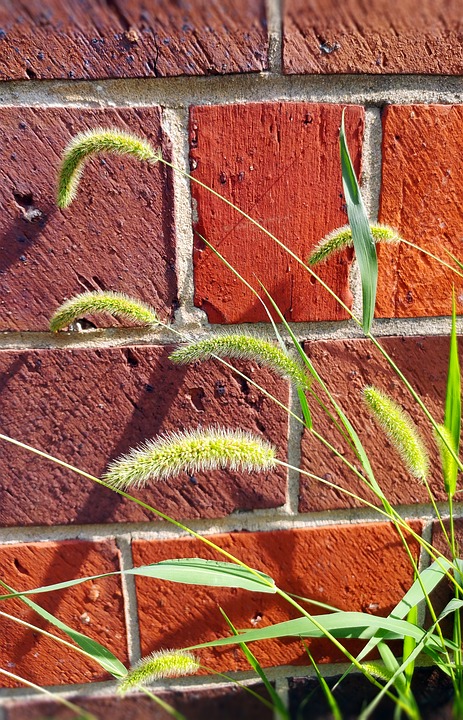
Oh, how I hate to see foxtail grass! The plant itself has a certain beauty, but it can wreak havoc for your dog and for your pocketbook. And that was certainly our experience!
We had two German Shorthaired Pointers (Moe and Larry – and our cat was named Curly – a side note for you Stooges fans!) They were typical Pointers who loved to explore and poke their heads and bodies in places they should have stayed far away from! Living in Southern California, we had a lot of foxtails, and every year Moe and/or Larry would end up having to go to the vet due to foxtails invading their bodies – either entering their ears making them shake ferociously or in their nostrils making them sneeze and feel miserable.
Our vet loved Moe and Larry! (He actually did, but we used to joke with him and tell him that our dogs’ adventurousness must have paid for the remodeling of his vet office!)
So, what is foxtail grass?
Foxtail grass is a grass usually thought of as a weed. It can grow up to three feet tall and can branch out and spread at ground level. Its leaf blades are 4 – 15 inches long, and its flower heads are dense spikes with yellow to red, purple or green bristles. When a foxtail matures, seeds that are very hard and tipped with a sharp point appear at the top of the stalk. These bushy seeds are the reason the plant is named “foxtail”.
How do foxtail seeds create so many problems?
Mother nature ensures that the plant reproduces by allowing the seeds to easily detach from the plant. These pesky seeds then oh so easily cling to all kinds of things, including your dog’s fur and hair. And since the seeds move forward, they can penetrate the skin. Ugh!
If the seeds go into the ears, eyes and nose, it can be very serious and even life threatening. But the seeds can also go into other body parts. They’ve been found in the anal glands, urethra, vagina, spinal cord, and even the brain. Plus, the seeds can enter through open wounds.
How do you know that foxtail seeds have invaded your dog?
Since foxtail seeds are tiny and can be hard to see, veterinarians usually diagnose according to symptoms.
When a foxtail enters the nasal cavity, it makes a dog violently sneeze, and your dog may even hit his nose on the floor. If there’s a bloody discharge, it’s more than likely due to a foxtail seed.
When a foxtail seed enters the eye, your dog will paw at his eye, and the eye will water. If your dog’s eye is glued shut, it is probably caused by a foxtail seed.
When entering the ear, your dog will shake its head violently. Sometimes a dog squints and paws at his eyes or ears.
If the foxtail seeds enter the mouth, it can cause gagging or difficulty swallowing. The seed can also become caught between the teeth, in the gums or tongue, or back of throat.
If you see a lump on your dog’s paw or under the coat, it may be due to a foxtail seed. The lump may be painful to the touch. Also, your dog may rub his head on the ground and go around in circles. He may also lick or bite at the body part where the foxtail seed entered, or he may yelp for no obvious reason.
Be sure to take your dog to your veterinarian as soon as possible when you suspect foxtail seeds may have penetrated into your dog. These seeds can cause fatalities if they reach internal organs, so please do not try to treat your dog by yourself.
How can you prevent foxtail seeds from causing your dog havoc?
- Get rid of it! If you have foxtail grass in your yard, pull up the plant by its roots as soon as you see its plumes appear in the spring. Don’t composte because the seeds can often survive. Instead, dispose of the entire plant. Warning: Don’t use a string trimmer because you could disperse seeds onto your yard. And if you must use a mower rather than pulling up the plant by the roots, use a grass-catcher.
- Avoid taking your dog to places where you know foxtail grows, such as parks or other recreational areas.
- Always inspect your dog’s coat after walking in grassy areas. Pay close attention to his eyes and ears and between his toes.
- Consider pet health insurance or a health savings account for your dog. If you live in foxtail territory, this can help with expensive vet bills.


